Table of Contents
If you’re wondering how much money do comic shops usually pay for comics? You’re in the right place! This article will cover everything you need to know about the world of comics, from what comics are, who creates them, and how much money do comic shops usually pay for comics.
What is a Comic?
A comic is a type of book that tells a story using a combination of pictures and words. Unlike regular books, which are only made up of text, comics include illustrated panels with characters, settings, and dialogue. Comics are often colorful and eye-catching, and they tell a variety of stories, ranging from superhero adventures to fantasy tales, mysteries, and more.
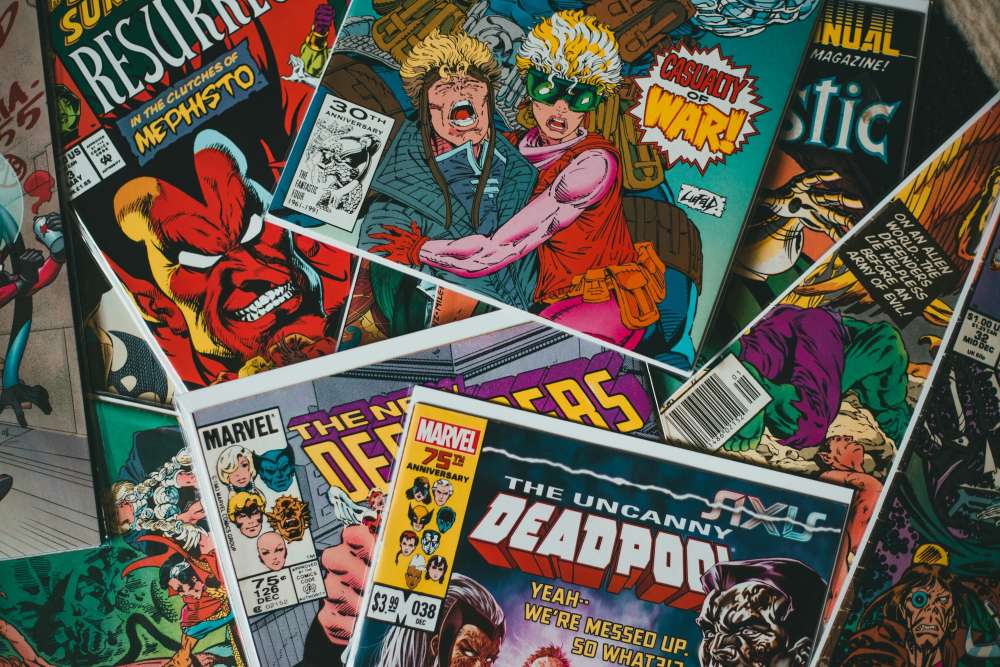
Who Creates Comics?
Comics are the result of the combined efforts of several creative professionals, each with a unique role in bringing a comic to life. Here’s a breakdown of the key people involved in the comic creation process
- Writer: The writer is the person who develops the storyline, characters, and dialogue in a comic. They are responsible for creating the world and deciding what happens in each panel. The writer’s job is to map out the sequence of events, write engaging dialogue for the characters, and structure the comic to ensure the story flows well from start to finish.
- Example: Stan Lee, the legendary writer behind many Marvel Comics characters, such as Spider-Man and the X-Men, is one of the most famous comic writers.
- Artist (Penciller): The artist, also known as the penciller, is responsible for drawing the comic. They bring the writer’s script to life by illustrating the characters, environments, and action in each panel. The artist needs to be skilled at visual storytelling, making sure the drawings clearly express the story and emotions.
- Example: Jack Kirby, known for creating the look of characters like Captain America and The Hulk, is one of the most well-known comic artists.
- Inker: The inker adds depth and definition to the artist’s drawings by going over the pencil work with ink. This process highlights important details and makes the illustrations more dynamic. Inkers use different techniques to add shadows, textures, and a sense of movement to the artwork.
- Example: Joe Sinnott, who worked with Jack Kirby on many Marvel comics, was a famous inker who enhanced the visual quality of the comics he worked on.
- Colorist: The colorist brings the comic to life by adding color to the inked illustrations. Their job is to choose a color palette that matches the mood and tone of the story. For example, dark, muted colors might be used for a serious story, while bright, vibrant colors could be used for an action-packed adventure.
- Example: Laura Martin, who has worked on popular comics like “The Avengers” and “Wonder Woman,” is a highly respected comic colorist.
- Letterer: The letterer is responsible for placing the text in the comic, including dialogue, sound effects, and captions. They design the speech bubbles, ensure the text is easy to read, and add unique visual elements to make the comic more exciting.
- Example: Todd Klein, known for his work on DC Comics’ “Sandman,” is one of the most famous letterers in the comic industry.
- Editor: The editor oversees the entire comic-making process, ensuring that the story, artwork, and layout are polished and cohesive. They work closely with the writer and artist to make sure the comic is high quality and meets the publisher’s standards.
- Example: Karen Berger, who helped develop the popular “Vertigo” line of comics, played an essential role in shaping many iconic comic books as an editor.
Each person plays a crucial role in bringing the comic to life, and their combined efforts make the comic complete.
What Types of Comics Are There?
Comics come in various types and genres, each appealing to different audiences. Below are some of the most common types of comics:
- Superhero Comics: Superhero comics are the most popular and widely recognized type of comic, featuring characters with extraordinary powers who often fight against evil or protect the world. These comics typically follow heroes like Superman, Batman, or Spider-Man as they go on thrilling adventures, battle villains, and save the day.
- Examples: Marvel Comics and DC Comics are the leading publishers of superhero comics, featuring iconic heroes such as Iron Man, Wonder Woman, and The Flash.
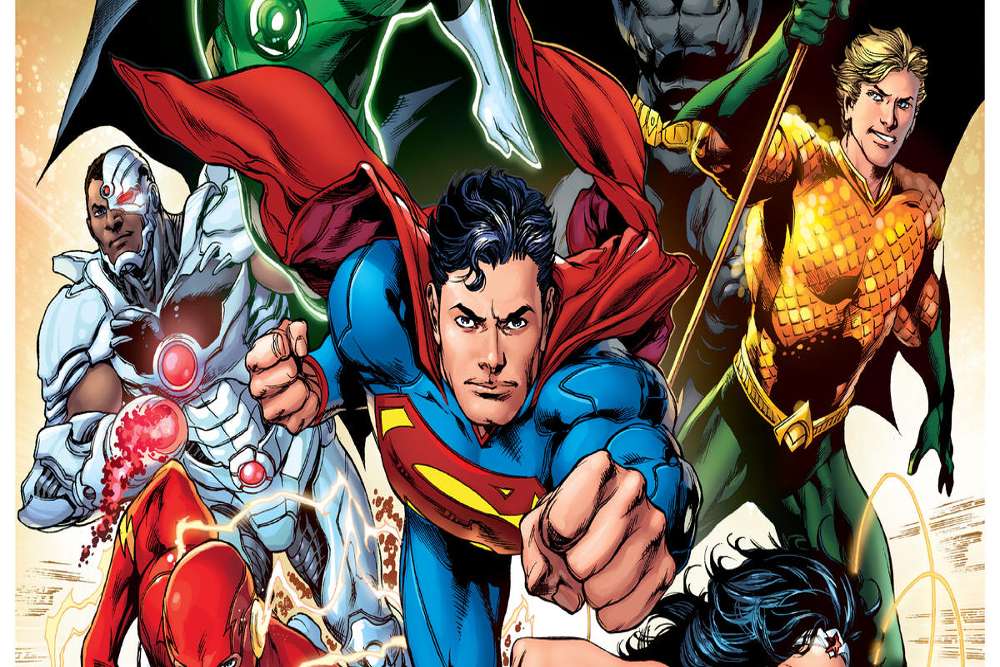
- Manga: Manga are Japanese comics that have become popular worldwide. Manga is unique because it is usually published in black and white and read from right to left, unlike Western comics, which are read from left to right. Manga covers a wide range of genres, from action-packed series to romance, fantasy, and slice-of-life stories.
- Examples: Famous manga series include “Naruto,” “One Piece,” and “Attack on Titan.”

- Graphic Novels: Graphic novels are a type of comic that tells a complete story in one book, rather than being serialized in multiple issues. Graphic novels can be fiction or non-fiction and often tackle more complex themes or tell longer, more detailed stories than traditional comics.
- Examples: “Persepolis” by Marjane Satrapi and “Maus” by Art Spiegelman are two well-known graphic novels.

- Independent (Indie) Comics: Independent comics are produced by small publishers or self-published by creators, outside the major comic companies like Marvel and DC. Indie comics often explore unique, experimental, or niche topics that may not be found in mainstream comics. These can range from fantasy and horror to personal memoirs and political stories.
- Examples: “Saga” by Brian K. Vaughan and Fiona Staples, and “The Walking Dead” by Robert Kirkman are examples of successful indie comics.
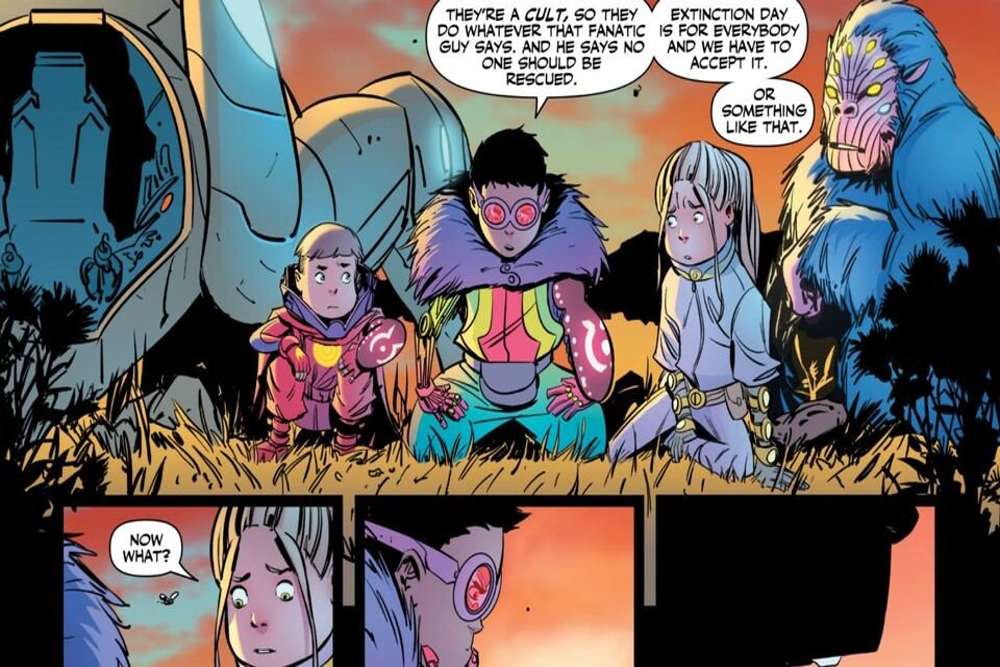
- Webcomics: Webcomics are comics that are published online, often free to read. These comics are typically shorter, more informal, and can cover any genre. Webcomics have gained popularity due to the ease of access, and many new artists start by publishing their work online.
- Examples: “Sarah’s Scribbles” by Sarah Andersen and “The Oatmeal” by Matthew Inman are famous examples of webcomics.
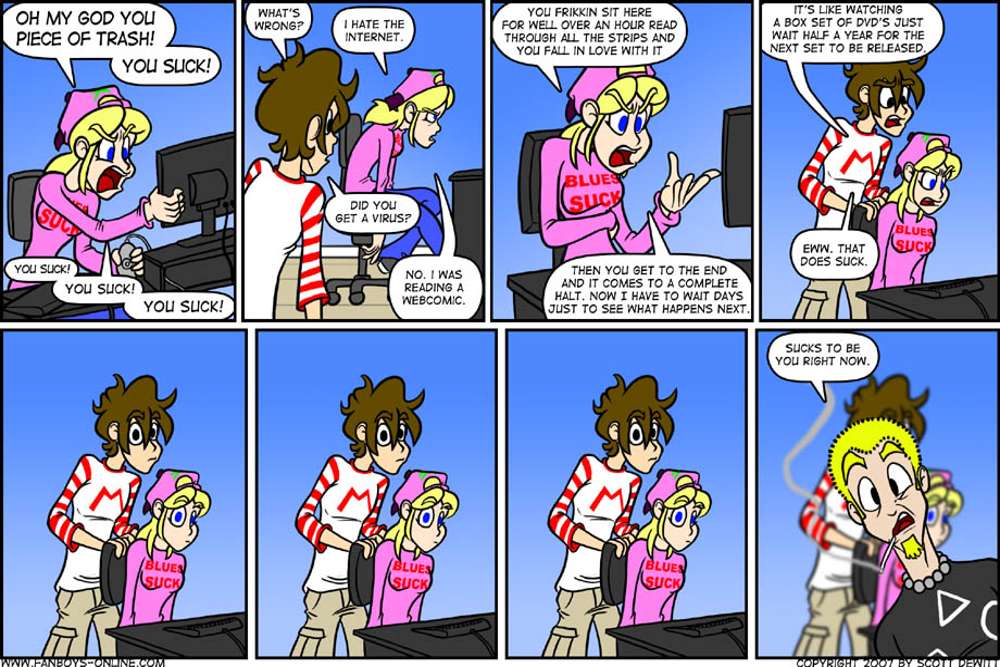
- Slice-of-Life Comics: Slice-of-life comics focus on everyday experiences and real-life situations. These stories often explore relationships, emotions, and personal journeys without involving superheroes or fantasy elements. These comics offer readers a relatable, often heartwarming or humorous look at life.
- Examples: “Yotsuba&!” by Kiyohiko Azuma and “Fun Home” by Alison Bechdel are popular slice-of-life comics.
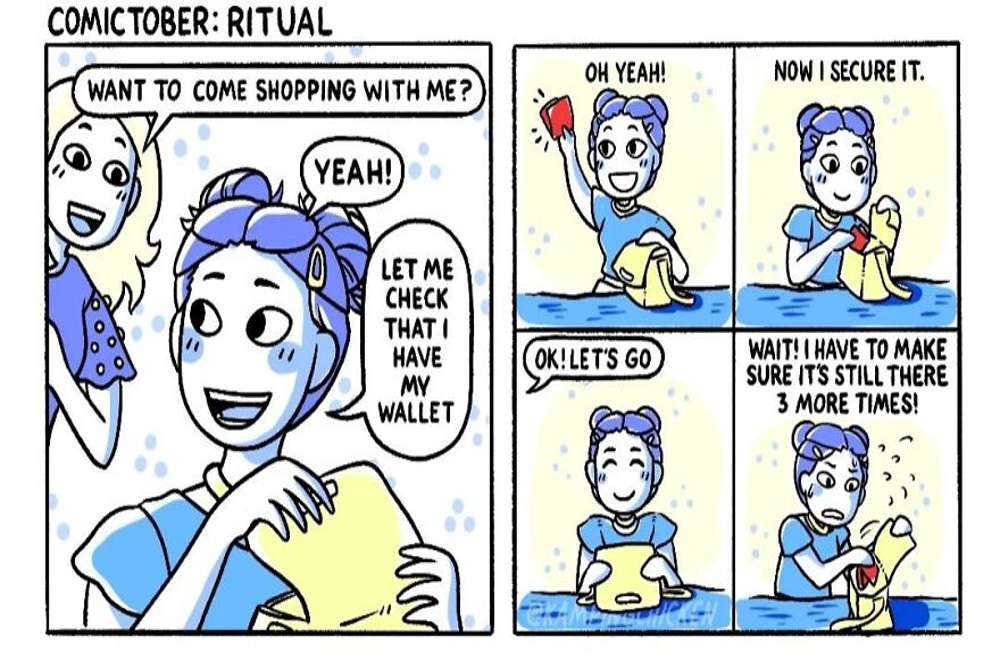
- Anthology Comics: Anthology comics feature multiple short stories in a single issue or volume, often created by different writers and artists. Each story is self-contained and can vary widely in genre, style, and tone.
- Examples: “Dark Horse Presents” and “Heavy Metal” are well-known anthology comic series.
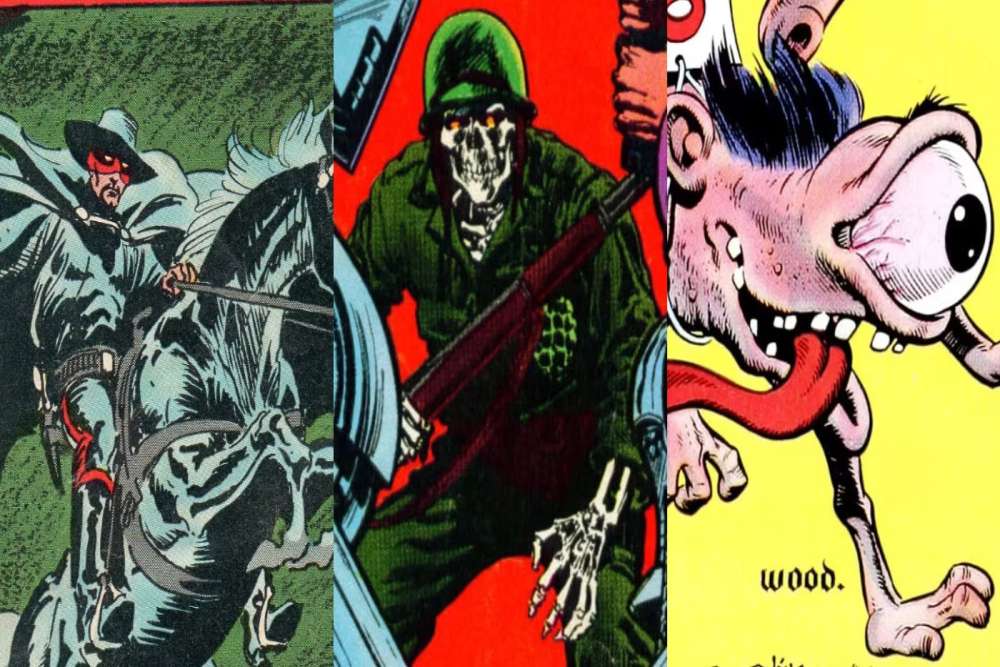
- Horror Comics: Horror comics tell stories designed to scare or unsettle readers. These comics can include monsters, supernatural events, or psychological thrillers. Horror comics often use dark, eerie artwork and intense plotlines to create a sense of suspense and fear.
- Examples: “The Sandman” by Neil Gaiman and “Locke & Key” by Joe Hill are famous horror comics.

Why Do People Buy Comics?
Comics have been a source of entertainment and inspiration for decades, captivating readers of all ages. While they were once considered niche, comics have now become a mainstream medium enjoyed by millions worldwide. But why do people buy comics? There are several reasons that motivate readers to pick up comic books regularly. Below, we’ll explore some of the main reasons
- Entertainment and Escapism: One of the primary reasons people buy comics is for entertainment. Comics offer a fun and engaging way to experience stories, often combining imaginative worlds with thrilling plots. For many, comics serve as a form of escapism, transporting readers to different realities filled with superheroes, futuristic settings, or magical lands.
- Superheroes: Superhero comics, in particular, provide readers with action-packed stories featuring larger-than-life characters. The exciting battles, heroic feats, and moral dilemmas often make readers feel as if they are part of a bigger adventure.
- Fantasy Worlds: Comics like “The Lord of the Rings” or “Saga” take readers on epic journeys through fantasy worlds, providing an escape from everyday life.
- Art and Visual Storytelling: Comics are unique because they combine both written and visual elements, offering a rich storytelling experience. Many people buy comics because they are drawn to the artwork and the way it complements the story. The visuals in a comic are just as important as the plot and characters, and for some readers, the art style can be the main attraction.
- Dynamic Illustrations: Comics like “Spider-Man” or “The X-Men” feature highly detailed action scenes, where the artwork brings the battles and movements to life in ways that pure text cannot.
- Emotional Expression: Artists in comics are skilled at conveying emotion through their drawings. A character’s facial expressions or body language can tell as much of the story as the dialogue itself.
- Nostalgia: For many adults, comics are tied to memories of childhood or teenage years. People who grew up reading superhero comics, manga, or Sunday newspaper strips often continue buying comics as a way to reconnect with those memories. Nostalgia plays a significant role in driving comic sales, as older readers enjoy revisiting the characters and stories they loved as kids.
- Classic Characters: Characters like Batman, Superman, and Wonder Woman have been around for decades. Readers who followed these heroes when they were younger often buy comics featuring these characters for a sense of continuity in their lives.
- Reboots and Reimaginings: Many comic book publishers frequently reboot classic series, giving modern updates to characters and stories while keeping the essence of the original. This allows older readers to enjoy new versions of their favorite comics.
- Community and Culture: Comics have grown into a vibrant and inclusive community where fans can share their passion with others. Many people buy comics to feel a sense of belonging within this culture. Whether it’s attending comic conventions, discussing plot theories online, or collecting rare issues, comics foster a strong sense of community.
- Comic Conventions: Events like Comic-Con allow fans to come together, meet creators, and buy comics directly from publishers and independent artists. These conventions are a huge draw for collectors and enthusiasts alike.
- Fan Communities: Online forums, social media groups, and fan clubs dedicated to comics allow readers to discuss their favorite series, theories, and upcoming releases. These communities often share recommendations, driving more comic purchases among members.
- Collectibility and Investment: Another reason people buy comics is for their collectibility. Some comic books, especially rare or first-edition issues, can become highly valuable over time. Collectors often seek out comics as both a hobby and an investment, hoping that their collections will increase in value.
- First Editions: First-edition comic books featuring popular characters like Superman or Batman from the 1930s and 1940s can be worth thousands or even millions of dollars today. This has led to a market for comic book collectors who aim to find and preserve these rare items.
- Limited Editions and Variants: Many modern comics are released in limited editions or with special variant covers. These unique editions often attract collectors looking for something special and rare.
- Connection with Characters: Comics allow readers to develop deep connections with characters, which often leads to a lifelong bond with certain series. Unlike movies or TV shows, which are over within a few hours or episodes, comics give readers a chance to follow characters over long periods, often spanning decades. This ongoing development allows for a stronger emotional connection.
- Character Development: Characters like Spider-Man and Wolverine have evolved over time, facing challenges, personal losses, and growth. Readers who have followed these characters since their creation often feel emotionally invested in their stories.
- Relatable Heroes: Many comic characters, despite their superhuman abilities, struggle with relatable problems like identity, loneliness, or moral dilemmas. Readers connect with these characters because they see parts of themselves in the heroes they admire.
- Education and Social Commentary: Comics are not just for entertainment; they can also educate and provoke thought. Many people buy comics because they appreciate the way the medium can explore complex themes, offer social commentary, or provide historical insight.
- Moral Lessons: Superhero comics often emphasize themes of justice, responsibility, and good versus evil. Readers, especially younger audiences, may be drawn to these moral lessons and life values.
- Social Issues: Comics like “X-Men” have been used to explore topics such as discrimination, civil rights, and identity. Other comics address issues like war, environmentalism, and personal trauma, offering readers a way to engage with these topics through a fictional lens.
How Much Do Comic Shops Pay for Comics?
Comic shops are vital to the comic book industry, serving as a hub for fans to purchase new issues, graphic novels, and rare editions. However, one question that often comes up is: How much do comic shops pay for the comics they sell? Understanding the financial side of comic shops is essential to see how they function and stay in business. Let’s break this down step by step to get a better picture.
- The Role of Comic Distributors: To understand how much comic shops pay for comics, it’s important to first look at the distribution process. Most comic shops don’t buy comics directly from publishers like Marvel or DC. Instead, they rely on distributors. The largest comic book distributor in North America is Diamond Comic Distributors, though other companies also exist. These distributors act as middlemen, supplying comic shops with new issues and graphic novels from various publishers.
- How Distributors Work: Comic shops place orders for upcoming issues through distributors. These distributors negotiate wholesale prices with publishers and then resell the comics to the shops at a markup.
- Diamond Previews Catalog: Diamond provides a catalog called Previews each month, allowing shop owners to decide which comics they want to order. Based on their orders, shops receive comics in bulk for a discounted price.
- New Comics: For brand-new comics, comic shops typically buy them at wholesale prices. This means they purchase them from distributors like Diamond Comic Distributors at 40% to 60% off the cover price. If a new comic costs $4.00, the comic shop might pay around $1.60 to $2.40 for it.
- Wholesale Prices for Comics: Comic shops generally pay wholesale prices for the comics they order. Wholesale pricing allows the shops to purchase comics at a reduced cost, which they can then mark up to make a profit. Wholesale discounts vary depending on the distributor, the volume of comics ordered, and the type of publisher.
- Typical Discounts: Most comic shops receive a discount ranging from 40% to 60% off the cover price of a comic. For example, if the retail price of a comic is $4.99, a shop might pay anywhere between $2 and $3 for each copy.
- Larger Orders, Bigger Discounts: Shops that order large volumes of comics often receive bigger discounts. For instance, a larger comic shop that orders hundreds of copies of a popular issue might pay closer to the 60% discount, while smaller shops that only order a few copies could receive a 40-45% discount.
- Exclusive Publishers: Some publishers, like Marvel and DC, may offer their comics at different rates compared to smaller, independent publishers. Larger publishers can afford to offer better deals due to higher sales volumes, whereas independent publishers might not provide as large a discount to comic shops.
- Cost of Independent and Small Press Comics: While mainstream comics from large publishers like Marvel, DC, and Image are the most popular, many comic shops also stock independent comics and small press titles. The amount that comic shops pay for these types of comics can differ from larger publishers.
- Independent Comics: These smaller publishers often work directly with distributors or may even sell their comics through alternative distributors outside of Diamond. The wholesale price for indie comics is usually lower, but the discount might be smaller, with shops paying between 30% and 50% off the cover price.
- Print-on-Demand: Some independent creators use print-on-demand services for their comics, meaning they only print as many copies as are ordered. In these cases, comic shops may pay close to the full retail price, with minimal discounts.
- Back Issues and Used Comics: In addition to new releases, many comic shops also buy and sell back issues—older comics that are no longer in print. The process for determining how much a comic shop pays for used or collectible comics is different from buying new issues.
- Condition and Rarity: The price a comic shop will pay for a back issue depends on the comic’s condition, age, and rarity. Shops typically use industry grading standards (like those set by CGC) to assess the value of the comic. A comic in mint condition will fetch a higher price than one that’s worn or damaged.
- Used Comics: If you’re selling your old comics to a shop, the price will depend on the condition, rarity, and demand of the comic. For common comics, a shop might pay as little as $0.10 to $1.00 per comic. However, for rare or highly sought-after issues, you could get a much higher offer, sometimes even hundreds of dollars.
- Graded Comics: Comics that are professionally graded (rated for their condition) can be worth much more. If a comic is in mint condition and has a high grade, comic shops might be willing to pay more for it, especially if it’s a rare issue.
- Buying from Collectors: Comic shops that buy used comics from collectors will typically pay a lower price than they plan to sell them for. For example, if a shop thinks they can sell a back issue for $100, they might only pay the collector $40 to $60. This is to ensure they make a profit on the resale.
- Popular Back Issues: For certain popular titles or first appearances of iconic characters, shops may be willing to pay more upfront, knowing they can resell the comic at a higher value.
- Special Editions and Variants: In recent years, variant covers and limited editions have become a big part of comic shop sales. Publishers release different versions of the same comic with alternate covers or special packaging. These comics are often rarer and more expensive, making them attractive to collectors.
- Variant Prices: Comic shops may have to pay more for variant covers, especially if they are limited editions. These rare comics can cost the shop more upfront, but they can also sell for a higher price—sometimes double or triple the cover price—to collectors looking for rare items.
- Incentive Variants: Some publishers offer incentive variants where the shop must order a certain number of regular issues to receive one rare variant. For example, a shop may need to order 25 copies of a regular comic to get 1 special variant cover. These variants can be very valuable and are often sold at a premium.
- Profit Margins and Challenges for Comic Shops: While comic shops buy comics at a discounted rate, their profit margins aren’t always as high as one might expect. A comic book’s cover price might seem low, but when you factor in other business expenses, the profit margins for comic shops can be quite slim.
- Operational Costs: Comic shops have to cover rent, utilities, employee wages, and other overhead costs. These expenses can cut into the profit they make from selling comics.
- Unsold Comics: One of the biggest challenges for comic shops is unsold inventory. Unlike other retailers, most comic shops cannot return unsold comics to the distributor for a refund. This means if a shop over-orders a certain issue, they may end up with excess stock that doesn’t sell, leading to losses.
- Balancing Popular and Niche Titles: Shops need to balance ordering enough copies of popular mainstream titles with offering a variety of niche or indie comics. Ordering too many mainstream titles that don’t sell can lead to financial strain, while not stocking enough indie comics may limit the shop’s appeal to a wider audience.
Factors That Affect the Price of Comics
When comic shops decide how much to pay for comics, they consider several important factors. The three main factors are condition, rarity, and demand. Understanding these can help you know why some comics are worth more than others.
- Condition: Condition refers to how well-preserved a comic is. The better the condition, the more valuable the comic is to both collectors and shops.
- Grading Systems:
- Comics are often graded on a scale from 1 to 10 by professional grading companies like CGC (Certified Guaranty Company).
- Mint (10): Perfect condition with no visible flaws.
- Near Mint (9): Almost perfect with very minor imperfections.
- Very Fine (8): Slight wear but still looks great.
- Fine (7): Noticeable wear, but still readable and attractive.
- Good (6) and below: More significant wear, possible damage like tears or stains.
- Impact on Price:
- High-Grade Comics (9-10): Shops pay more for comics in mint or near-mint condition because they are more appealing to collectors.
- Lower-Grade Comics (1-5): These are worth less because their condition makes them less desirable. They might be sold for display or casual reading rather than collecting.
- Common Issues Affecting Condition:
- Tears and Creases: Physical damage like torn pages or bent corners lowers the value.
- Stains and Discoloration: Marks or fading colors make a comic less attractive.
- Missing Pages: Any missing content decreases the value.
- Binding Issues: Poor binding or loose pages also reduce value.
- Preservation Tips:
- Protective Sleeves: Store comics in protective sleeves or cases to prevent damage.
- Proper Storage: Keep them away from direct sunlight, moisture, and extreme temperatures.
- Handle with Care: Always handle comics with clean hands to avoid oils and dirt.
- Grading Systems:
- Rarity: Rarity indicates how difficult it is to find a particular comic. The rarer a comic, the higher its value, especially among collectors.
- Print Run:
- Limited Editions: Comics printed in small quantities are more valuable because fewer copies are available.
- First Editions: The first issue or first printing of a comic series is often rarer and more sought after.
- First Appearances:
- Iconic Characters: Comics featuring the first appearance of significant characters (like Spider-Man in “Amazing Fantasy #15”) are extremely rare and valuable.
- Variants and Special Releases:
- Variant Covers: Comics with different artwork on the cover compared to the standard version. Some variants are produced in limited quantities, making them rarer.
- Incentive Variants: Special variants given to shops that meet certain order criteria, making them rare for general buyers.
- Historical Significance:
- Milestone Issues: Significant issues like anniversaries or special events.
- Iconic Storylines: Comics that marked important events in the industry or popular culture tend to be rarer.
- Out of Print:
- Hard to Find: Comics that are no longer being printed and are hard to find in good condition can be more valuable.
- Signed or Special Copies:
- Autographed Comics: Signed by the creators or artists are rarer and more valuable.
- Special Editions: Variants with additional content, such as sketches or exclusive stories, can influence prices.
- Print Run:
- Demand: Demand reflects how much people want a particular comic. High demand can drive prices up, while low demand can lower prices.
- Popularity of Characters:
- Comics featuring well-known and beloved characters like Spider-Man, Batman, or Superman often have high demand, increasing their value.
- Current Trends and Media:
- When a character is featured in a movie or TV show, demand for related comics can spike.
- Popular story arcs or reboots can also increase demand.
- Cultural Relevance:
- Comics that address current social issues or resonate with cultural trends can see increased demand.
- Collector Trends:
- The interests of collectors can change, affecting which comics are in high demand.
- Certain genres or styles may become more popular over time.
- Scarcity and Exclusivity:
- If a comic is hard to find or has a limited run, even a moderate demand can result in higher prices.
- Author/Artist Reputation:
- Comics created by famous writers or artists often have higher demand.
- Notable creators can make a comic more sought-after.
- Investment Potential:
- Comics seen as good investments, expected to increase in value, can have higher demand.
- Popularity of Characters:
How These Factors Interact
These factors often influence each other. For example:
- A Rare Comic in Excellent Condition: A first edition “Amazing Fantasy #15” (first appearance of Spider-Man) in mint condition is extremely rare and in high demand, making it very valuable.
- A Common Comic in Poor Condition: A recent “Spider-Man” issue in fine condition is more common and less expensive compared to the first edition.
Examples to Illustrate
- First Appearance of a Character:
- Amazing Fantasy #15: First appearance of Spider-Man. If it’s in mint condition, it’s extremely rare and highly valuable.
- Variant Covers:
- Variant Cover Editions: If a variant cover was only printed in 100 copies, a comic shop would pay more for it due to its scarcity and the demand from collectors who want unique covers.
- Popular Story Arcs:
- Infinity Gauntlet: A popular storyline that increased demand for related comics. Shops might pay more for key issues from this arc.
Other Minor Factors
While condition, rarity, and demand are the main factors, a few other elements can affect comic prices:
- Age: Older comics are often more valuable, but not always. The age must coincide with rarity and demand.
- Market Trends: The overall health of the comic market can influence prices, similar to other collectibles.
- Special Features: Unique features like special covers or added content can influence prices.
How to Sell Your Comics
If you’re looking to sell your comic books, you’ll want to get the best price possible. Whether you’re selling a few old comics or an entire collection, understanding the right way to sell them is important.
- Know the Value of Your Comics: Before you sell, it’s essential to know how much your comics are worth. The value of comics can vary based on several factors, such as condition, rarity, and demand (as mentioned in the previous section).
- Grading Your Comics:
- Comics in mint condition (10 out of 10) will fetch more than comics in lower conditions. You can either assess the condition yourself or send your comics to professional grading services like CGC (Certified Guaranty Company) to get an official grade.
- Research Market Prices:
- Use resources like Overstreet Comic Book Price Guide, eBay, or online comic marketplaces to see what similar comics are selling for.
- Grading Your Comics:
- Decide Where to Sell Your Comics: Once you know the value of your comics, you’ll need to decide where to sell them. Different platforms offer different advantages depending on how fast you want to sell and how much control you want over the price.
- Local Comic Shops:
- Many comic book stores buy used comics, especially if they’re rare or in high demand.
- Pros: Convenient and fast. You can get cash or store credit immediately.
- Cons: Shops may offer less money because they need to resell the comics at a profit.
- Online Marketplaces:
- Websites like eBay, Facebook Marketplace, and Craigslist allow you to list your comics for sale directly to buyers.
- Pros: You can often get a better price since you’re selling directly to collectors.
- Cons: You’ll need to handle shipping, and it might take longer to find a buyer.
- Comic Conventions:
- You can rent a booth or table at comic conventions and sell your comics directly to attendees.
- Pros: Great for reaching a large group of interested buyers.
- Cons: Requires time and possibly travel expenses to attend conventions.
- Specialized Comic Auction Sites:
- Sites like ComicConnect, Heritage Auctions, and MyComicShop specialize in comic book auctions.
- Pros: These platforms are designed for selling rare or valuable comics, often resulting in higher prices.
- Cons: Some auction houses charge seller fees or commissions.
- Sell to Collectors:
- You can connect with comic book collectors through online forums or social media groups.
- Pros: Direct sales with people who are specifically interested in your comics.
- Cons: This method can take time, and you’ll need to build trust with potential buyers.
- Local Comic Shops:
- Prepare Your Comics for Sale: Presentation matters when selling comics. Even if you have valuable issues, their appearance can affect how much buyers are willing to pay.
- Bag and Board Your Comics:
- Place each comic in a protective plastic sleeve (bag) with a backing board to keep it flat and clean. This prevents further wear and damage.
- Organize Your Collection:
- If you’re selling multiple comics, group them by series, issue numbers, or character. An organized collection is more appealing to buyers.
- Take High-Quality Photos:
- If you’re selling online, take clear photos of the front and back covers of each comic. Include close-ups of any important features or flaws so buyers can see what they’re getting.
- Bag and Board Your Comics:
- Set a Fair Price: Pricing your comics correctly is key to making a successful sale. You want to find a balance between getting a good price for yourself and setting a price that’s attractive to buyers.
- Start with Market Research:
- Check what similar comics are currently selling for on sites like eBay or Heritage Auctions. You can also look at completed sales to see what people have actually paid.
- Consider Condition:
- The condition of your comics (especially if graded by CGC) will significantly impact the price. A comic in near-mint condition (9.0 or higher) can be worth far more than one with visible wear.
- Be Willing to Negotiate:
- Whether you’re selling online or in person, be prepared for buyers to haggle. Have a minimum price in mind that you won’t go below.
- Start with Market Research:
- Advertise Your Comics: To sell your comics successfully, you need to let potential buyers know they’re available. Good advertising can help your comics get noticed faster.
- Write a Clear Description:
- Provide details about the comic’s title, issue number, condition, and any key features (like first appearances or variants). If your comic is graded, mention the grade.
- Use Social Media:
- Platforms like Instagram, Facebook, and Twitter can help you reach comic book fans and collectors. Post clear pictures and use hashtags like #comicsforsale or #comicbookcollection.
- Join Comic Forums:
- There are many online communities dedicated to comic books. You can post your comics for sale on these forums and reach serious collectors.
- Write a Clear Description:
- Complete the Sale: Once you’ve found a buyer, it’s time to close the deal. Make sure to handle the transaction professionally.
- Shipping:
- If selling online, make sure to package the comics securely to prevent damage during shipping. Use sturdy boxes, bubble wrap, and extra padding to protect your comics.
- Consider offering insured shipping for expensive comics, so both you and the buyer are protected in case of loss or damage.
- Payment:
- If selling in person, many buyers prefer cash, but you can also use apps like PayPal or Venmo for secure transactions.
- For online sales, ensure you use trusted payment methods that offer buyer/seller protection, such as PayPal or credit card payments through platforms like eBay.
- Shipping:
How Do Comic Shops Make Money?
Comic shops buy comics at lower prices and sell them at higher prices to make a profit. For example, if they buy a comic for $1.50 from a distributor, they might sell it for $4.00, making a profit of $2.50. The same goes for used comics—they buy them at lower prices and sell them at a markup. Besides comics, many shops also sell toys, posters, and other merchandise, which helps increase their profits.
Conclusion
Comic shops pay different prices for comics based on whether they are new or used, and their value depends on factors like condition, rarity, and demand. If you’re looking to sell your comics, make sure they are in good condition and do some research to know their worth. Whether you’re a reader or a collector, comics are a fun and creative way to enjoy stories and art!
By understanding how much money do comic shops usually pay for comics, you’ll be better prepared if you ever decide to sell your collection.
